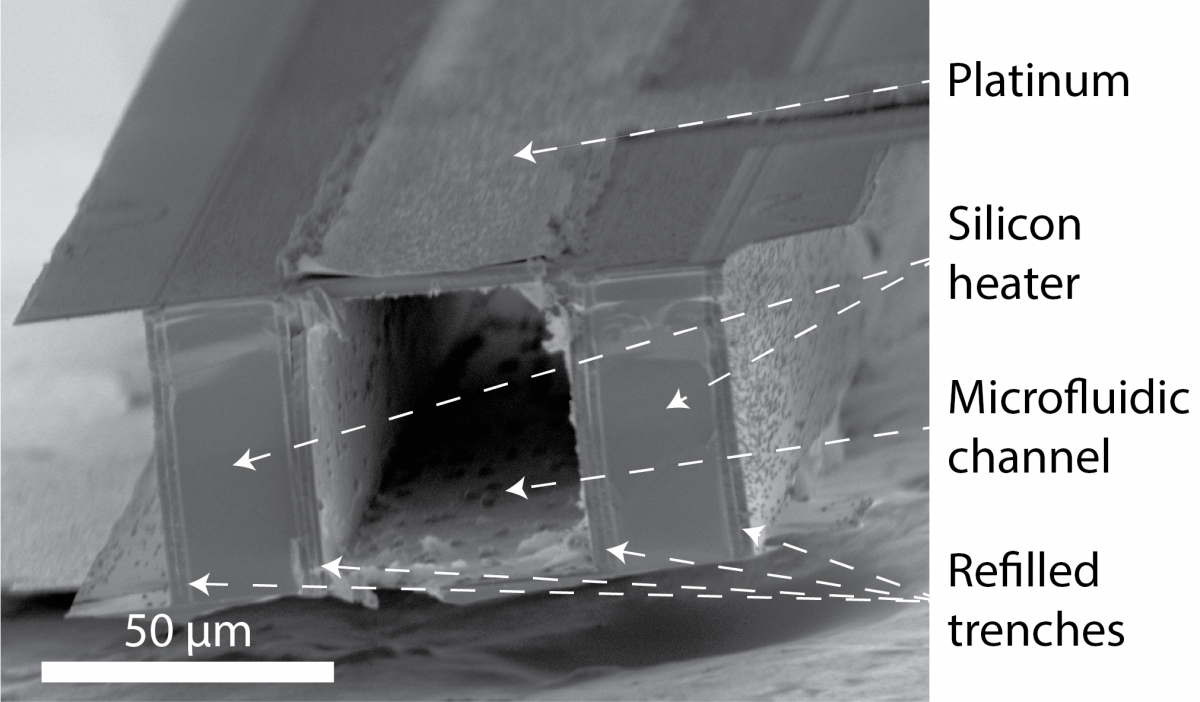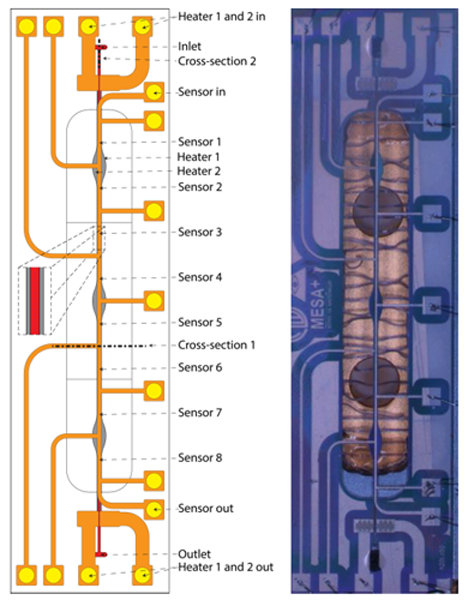 Part of the Oxford Instruments Group
Part of the Oxford Instruments Group
Expand
Collapse

We are very pleased to present a research project from Henk-Willem Veltkamp, M.Sc., researcher and process technologist at the University of Twente (Enschede, the Netherlands), focusing on microfluidic channels for high-temperature applications.
The work was carried out using a range of systems from Oxford Instruments, including the PlasmaPro® 100 Estrelas deep silicon etcher (DRIE), the PlasmaPro® 80 plasma-enhanced chemical vapour deposition (PECVD), and the IonFab ion beam etcher (IBE).
The main purpose of this research project was to develop a microsensor to measure the calorific value of natural gas by combustion. The high demand for cleaner and greener energy has led to an increase in focus on research projects for natural gas combustion, which is considered a cleaner process compared to burning fossil fuels.
The high energy density of hydrocarbon fuels creates a great opportunity to develop combustion based micro-power generation systems to meet increasing demands for portable power devices, micro-unmanned aerial vehicles, micro-satellite thrusters, and micro-chemical reactors and -sensors.

SEM image of a cross-section of the microfluidic channel, showing the two silicon heaters on both sides.
Henk-Willem et al. successfully fabricated mechanically stable, thermally isolated microfluidic channels with silicon sidewall heating elements (SHEs) embedded in the sidewalls.
During his PhD, Henk-Willem gained a lot of hands-on cleanroom experience, using various Oxford Instruments’ etching and deposition tools extensively for his research project.
Research purpose – fabrication process of microfluidic channels for high-temperature applications.

"One of the benefits using Oxford Instruments systems is that they are robust, the user interface straightforward, and you can easily change the recipe settings."
Henk-Willem Veltkamp, M.Sc., researcher and process technologist at the University of Twente

As high-aspect-ratio structures are a crucial part for the fabrication of MEMS devices, Henk-Willem currently continues to be involved in projects with high-aspect-ratio trench structures. In his current work, the research team try to optimize the trench entrance and sidewall profile angle “to prevent keyhole formation”, providing better mechanical strength and higher quality electrical and thermal insulations.
As a long-term partner with the University of Twente, Oxford Instruments Plasma Technology will continue to support their cutting-edge research and development projects into microelectromechanical systems and share our expertise to further develop their fabrication processes in semiconductor industries.
Figure 1. The straight proof-of-principle device. Schematic and microscope image of a straight 8.5 mm long channel with two-sided heating. The insert shows a piece of channel without metal and capping layers. The total size is 1.30 cm by 0.35 cm. The colors are representing: yellow - metal, red - SiRN, orange - SiNx capping, grey - heater tracks.
References: Method for Keyhole-Free High-Aspect-Ratio Trench Refill by LPCVD, High Power Si Sidewall Heaters for Fluidic Applications Fabricated by Trench-Assisted Surface Channel Technology.